
Director and producer Di He at AIVFX in Canada explains the value of computer science and programming in developing customized render and production pipelines for animation. He and his team recently produced ‘The Birthday Gift’, a prizewinning animated short film.
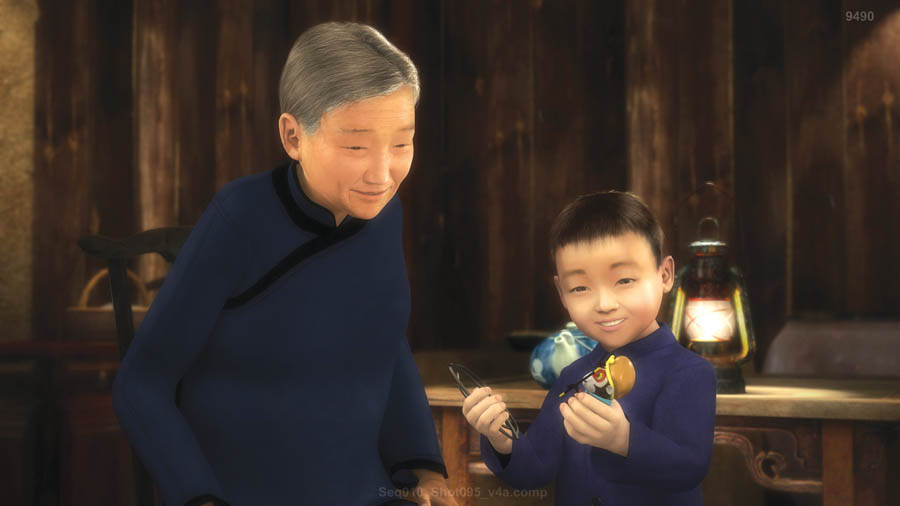 |
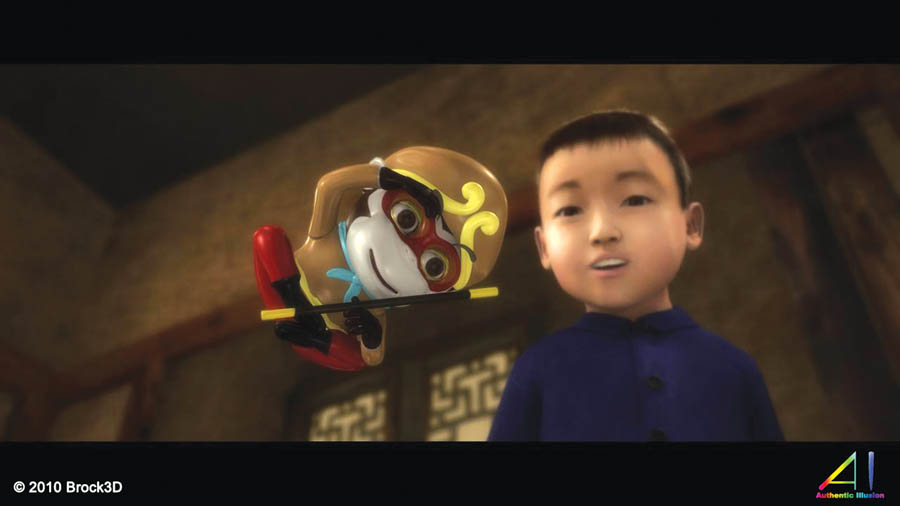 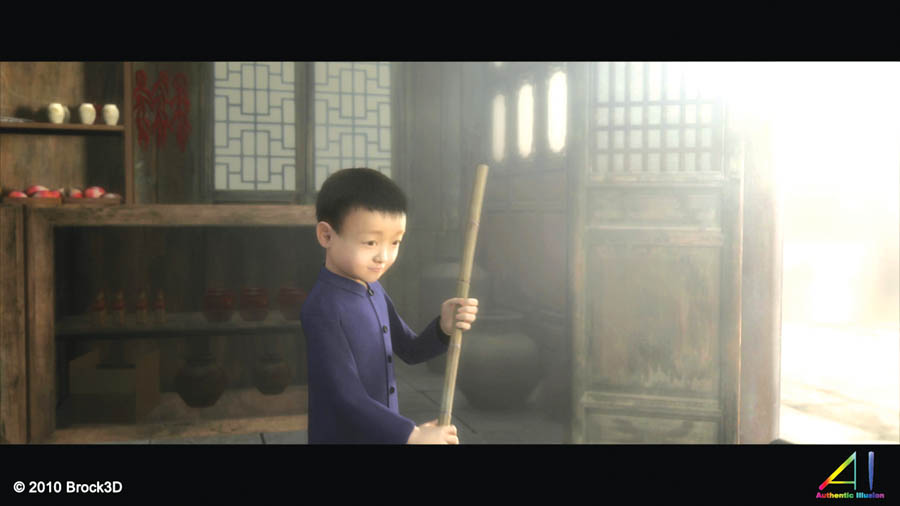 |
|
Di He is a director and producer of animated films, originally from China and now based in Toronto at Authentic Illusion VFX, has a background in both classical sculpture and computer science. When Di was studying for sculpture at art college in China in the mid-nineties, computer graphics resources were still not as accessible to Chinese art students as they were elsewhere. Programming Perspective “I could approach software from a programmer’s perspective instead of only as an artist. I use this knowledge in my work every day and it makes a huge difference. Some things can only be achieved through programming – shaders, VFX simulations, rendering and lighting – and cannot be mastered purely through artistic skill. Artists also need to understand the physical principles controlling how the computer displays lighting and colour, for example.” He finds this understanding invaluable for computer animation. Di designed the whole rendering pipeline for the projects at AIVFX, which runs with a very small team, as well as the production pipeline to customize and streamline the workflow. It took Di about a week to set up the render pipeline, based mostly on 3Delight with the addition of in-house shaders and 3-point light setups, with additional lights when needed. “Production time on ‘The Birthday Gift’, with a team of only five, was just three months,” Di said. “We try to focus on efficiency, so no one has to set up scenes from scratch. Each person concentrates on being very skilled at what they do, and communicating with all the other members in the team.” Renaissance Painting “The characters are based mostly on some photographs we found online. I’d say the most challenging of these was the grandmother, an old lady. She has to portray someone who is very poor but also very kind. The way she talks, her expressions and overall behaviour were quite difficult for us to capture.” Blending Animations “Scale, however, was difficult to figure out for this production, and we decided to make an environment that ‘fits’. Even though not every object is at a proper scale, they have all found their places and feel right. We based a lot of the environment design on our own memories and feelings. Using photo reference was almost secondary.” |
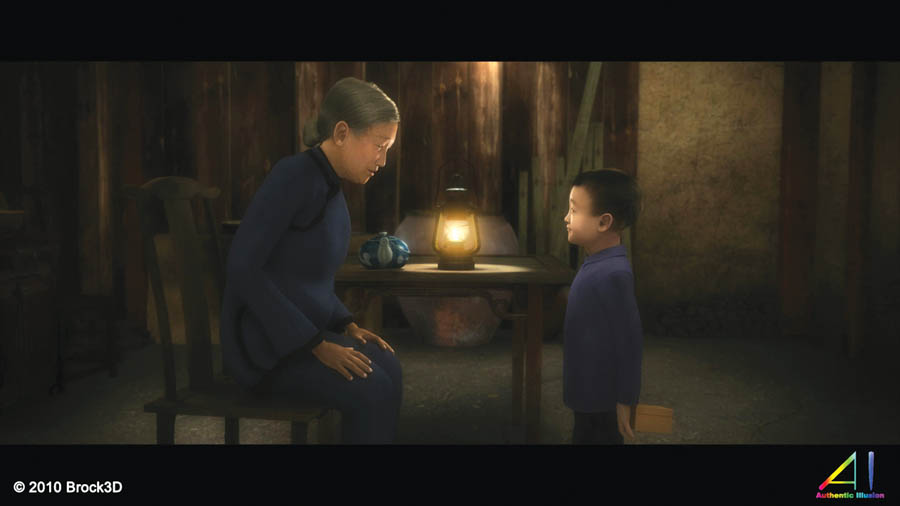 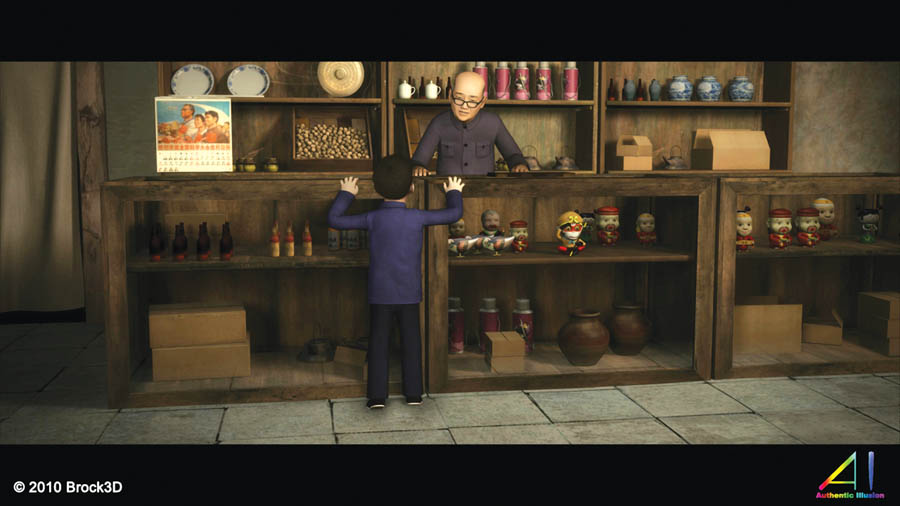 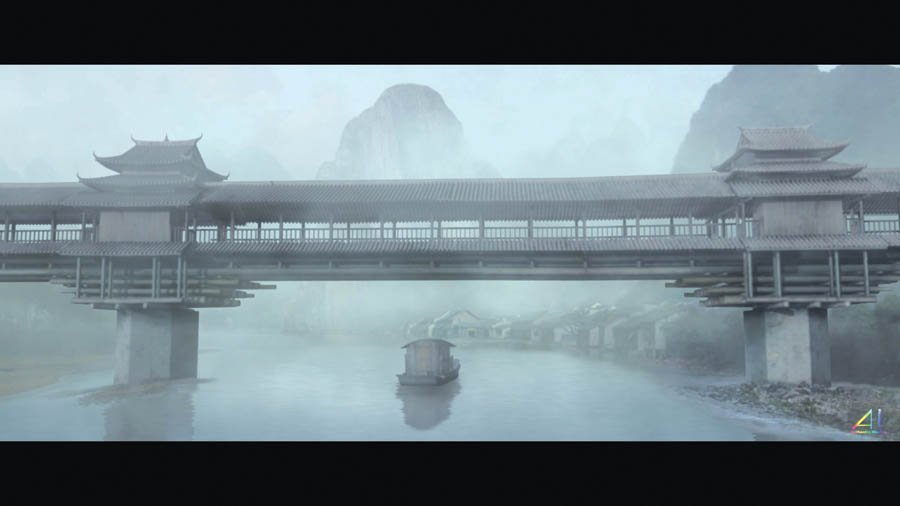 |
|
Composition and Colour Every location has a carefully chosen colour palette to help establish the mood, and time was spent ‘painting with light’. The particle systems in 3DS Max and Particle Flow were used to generate subtle snow, smoke and fog effects to bring more realism to the film, but the setting is mean to transcend the natural world. “Each frame is in essence a Renaissance painting – the environments are lit with warm inviting lighting and care was taken to perfect the composition of each shot,” Brock said. Bouncing Logs “In addition to Reactor, we also used 3DS Max cloth to help model some organic models and, of course, cloth objects. We had an exact idea of how most objects should look, and often had detailed digital paintings to guide the modellers. The clock that sits on the store shelf is unusual. Chinese characters in the middle circle represent the numbers and the inner Chinese characters represent the part of the day.” Broken Seams One of the challenges we had to overcome was the fluidity of the cloth motion on all three characters. We were trying to create very thick cotton, similar to denim, but more flexible. We had to control the flexibility and overall movement to let us dictate the overall look, while maintaining a believability of dynamic motion. With a lot of testing and adjusting we were able to create a cloth in Maya nCloth that behaved realistically. Upstaged He agreed that the grandmother was a challenge. “She had to be appealing and represent a grandmother to many types of cultures, as this production is intended for international showing. We asked ourselves, ‘How wrinkled should she be? How healthy is she? Do we want the audience to worry about her?’ She went through a few hair styles before we settled on one. And, with all of this attention going into her, we had to make sure that she didn’t steal the spotlight from our main character, her grandson.” Di mentioned that they were using eyeon's asset management software, Generation, as well. “It allowed us to see the shots and how we wished to adjust them. We didn’t use it everyday from the beginning but found it very useful toward the end when we ran into a number of small problems. We could create several versions of a scene, then use Generation Studio to track differences between them and decide quickly which one to choose for the edit. We use it to manage designs, lighting tests, animation takes and so on. Best Short Film Recently, the team has been working with Hall Train Studios, an archeological design and animation company in Canada, on dinosaur animations for the New York Natural History Museum using Lidar scans of models based on scientific research. AIVFX have developed software for rendering millions of long and short hairs and fur very rapidly. “You can see where we used this for the old lady in ‘The Birthday Gift’. She has very long hair, which is always a challenge for rendering,” said Di. |
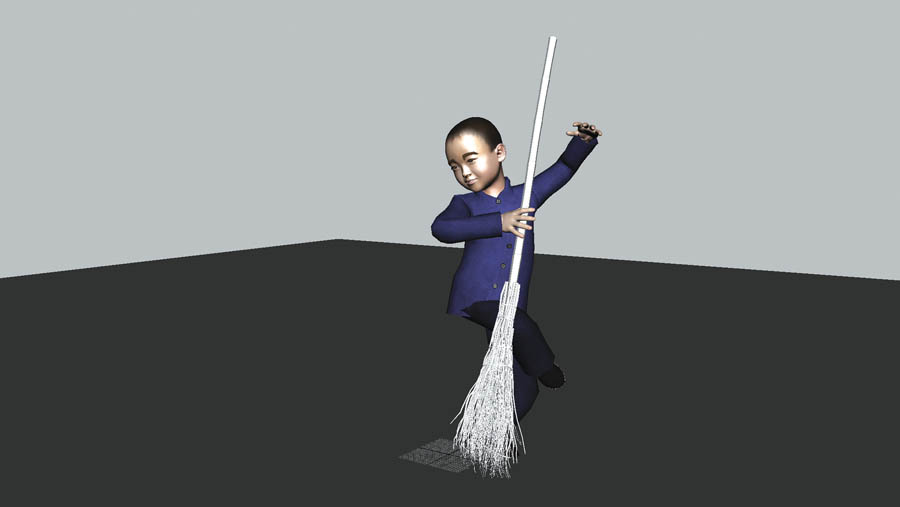  |
| chinese painting Brock had been used to Autodesk and Adobe software for compositing but they used Fusion 6 on this project, which meant changing from layers to nodes. He liked the Fusion 3D particle system. “One challenge in our development was to capture the nature spirit of Chinese painting. Fusion handles 3D animated clouds, fog, water and snow environment and gave almost real-time feedback in our final compositing view, like working in front of a moving canvas. We also designed a set of Fusion scripts with naming sequences and shots based on a database. When the artists opened a Fusion file, the image loader, frame number, time code and output are ready, which saved time. We had 120 shots, all done in Fusion.” |
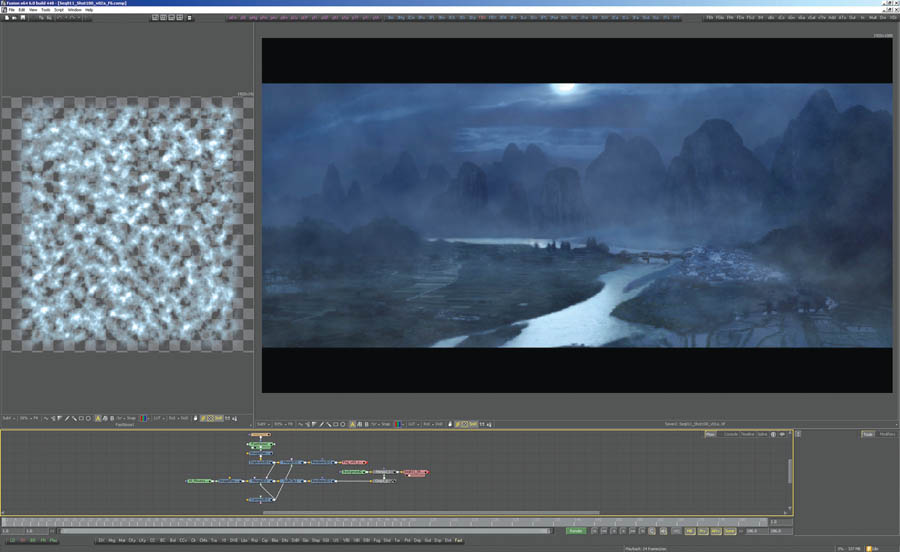 |
| Words: Adriene Hurst with Di He and Brock Lafond Images: Courtesy of AIVFX and Brock Lafond |
| Featured in Digital Media World. Subscribe to the print edition of the magazine and receive the full story with all the images delivered to you.Only$79 per year. PDF version only $29 per yearsubscribe |


















